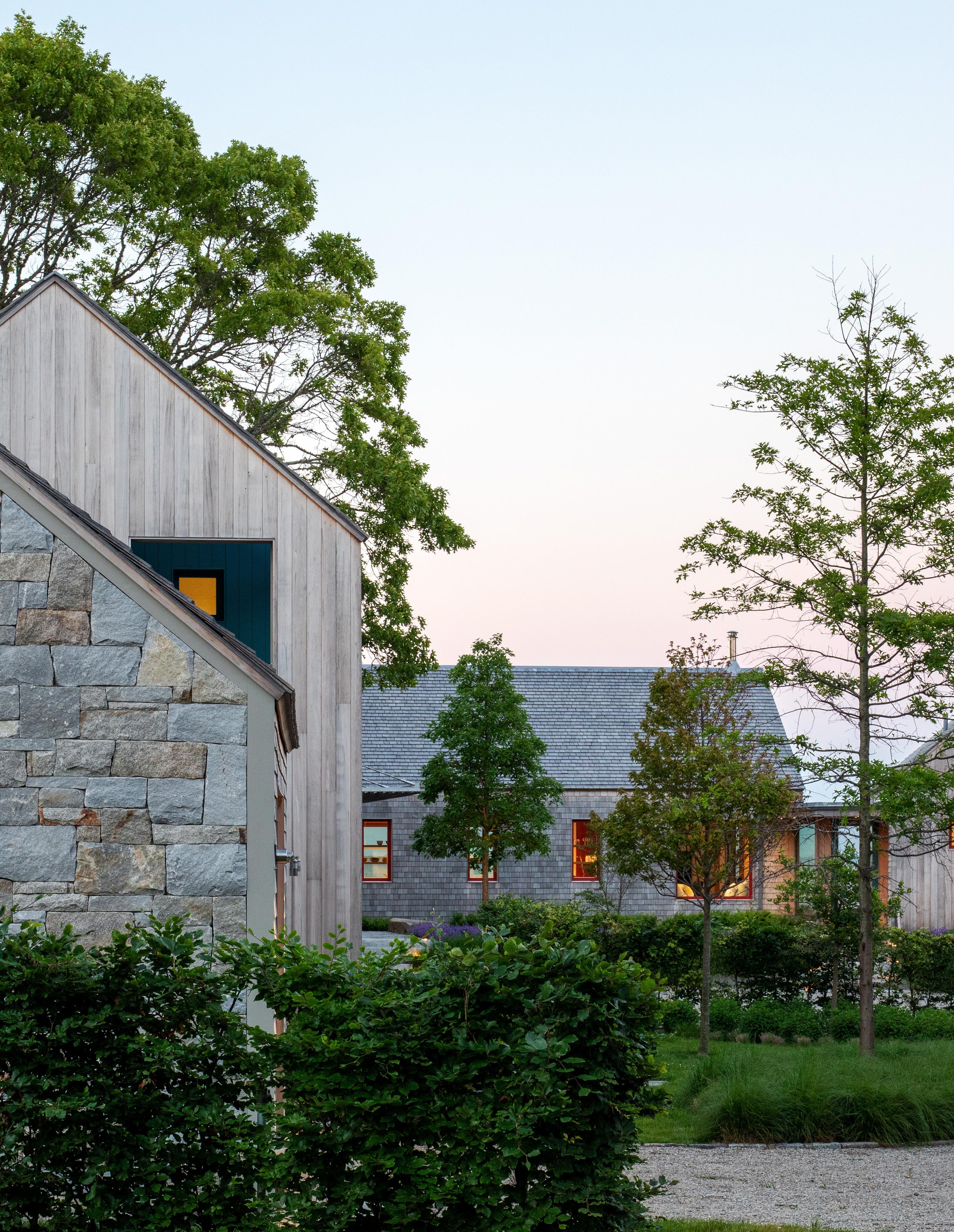

SUSTAINABILITY ACTION PLAN
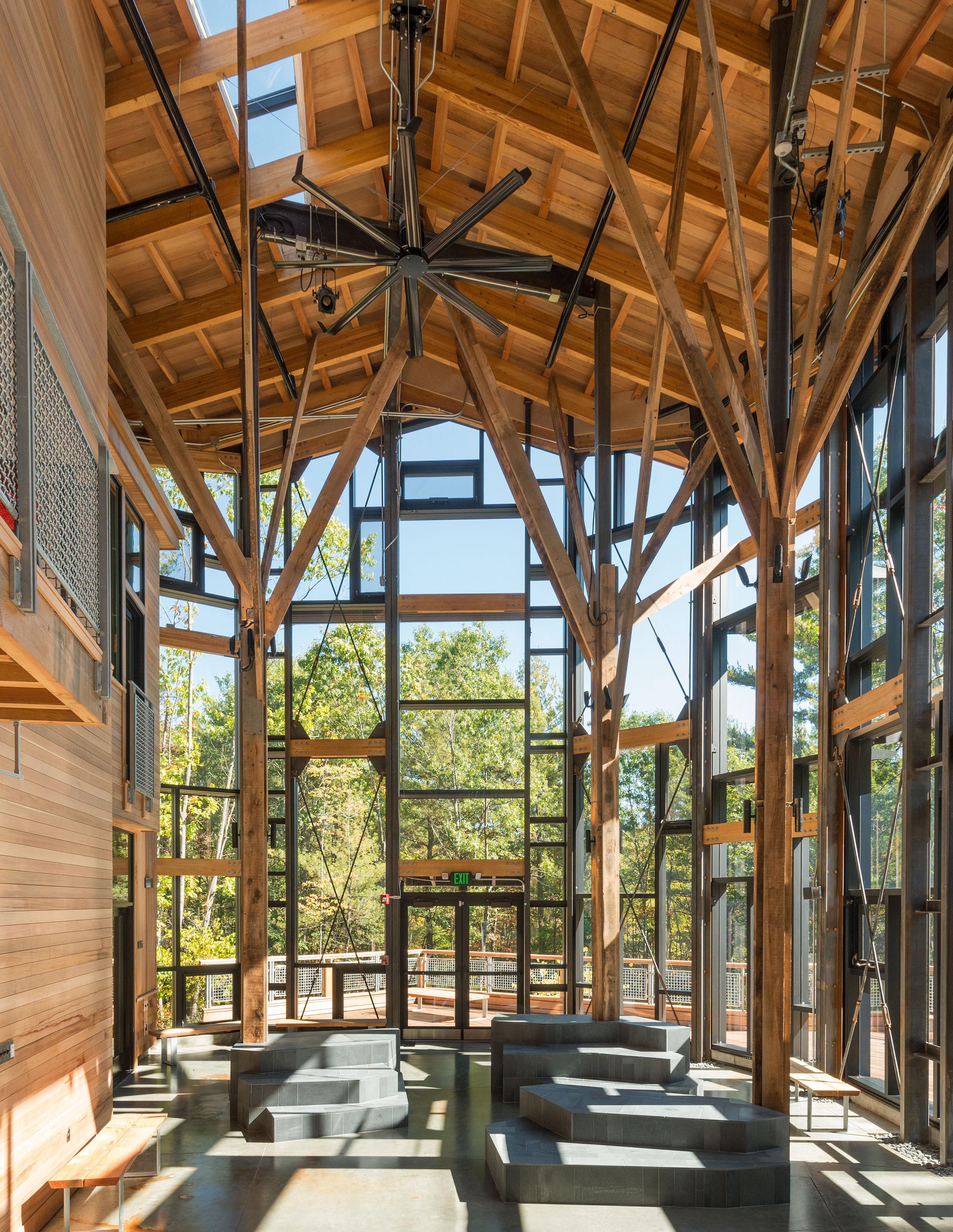
Summer Star Wildlife Sanctuary Trailhead House
00 | INTRODUCTION
IN THIS WE BELIEVE
We at studioDSK know that design and construction contribute to improving people’s lives, providing shelter, and building community. Our buildings are places to live, work, and learn. However, design and construction contribute to climate change, biodiversity loss, waste, plastics in the ocean, abundance of chemicals of concern, and water shortages.
With a wicked problem, we begin where we are. We believe we can contribute to the solution with our practice.
In 2018 studioDSK signed the AIA 2030 Commitment to document the energy use of our building designs. We started with two projects in the database, and have reported more projects each year. We wrote
our Sustainability Action Plan (SAP) in 2020, then wrote a Healthy Materials Guide in 2022. We shared our SAP on our website in 2023. In December 2024, we signed the AIA Architecture and Design Materials Pledge.
This 2025 updated SAP incorporates lessons from our Healthy Materials Guide, and our first year reporting for the Materials Pledge. The SAP is a tool for studioDSK designers to implement design practices to build better buildings.
From concept design to materials selection to post-occupancy, the SAP identifies questions to ask and identifies data to collect to measure and improve our projects.
The climate is changing. So are we.
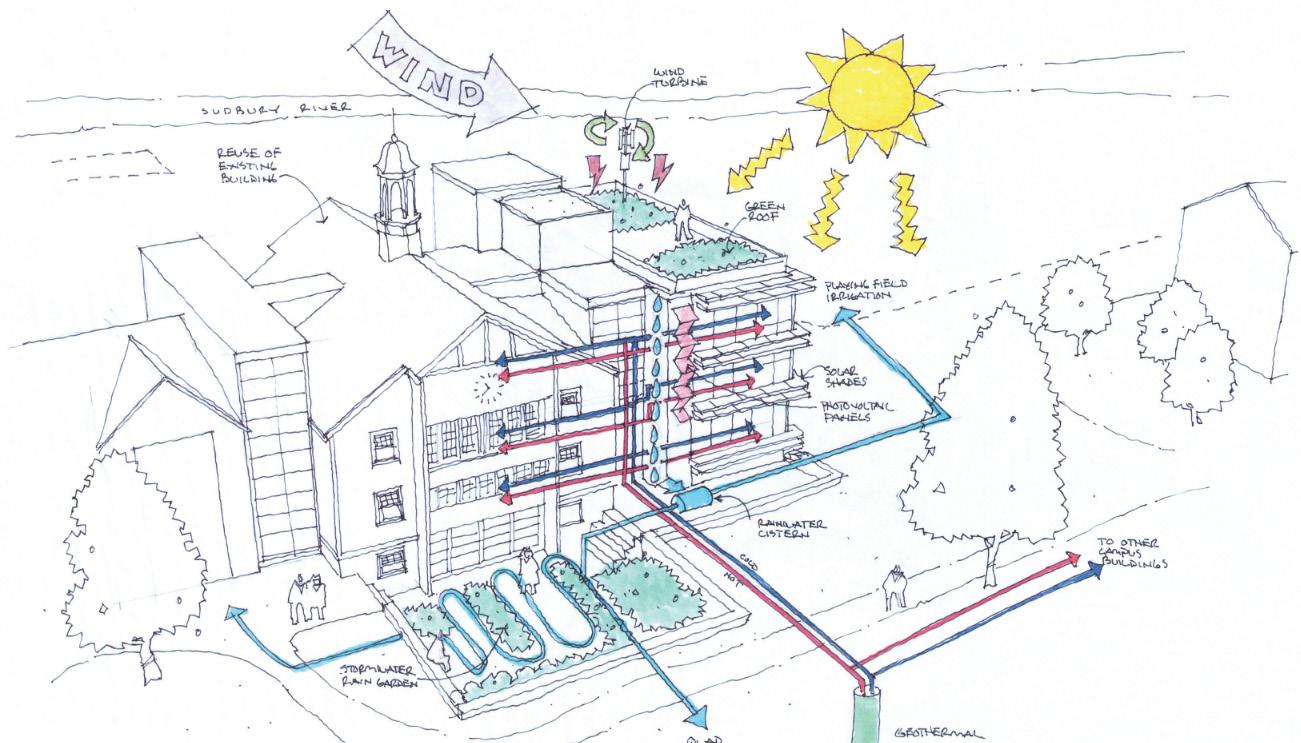
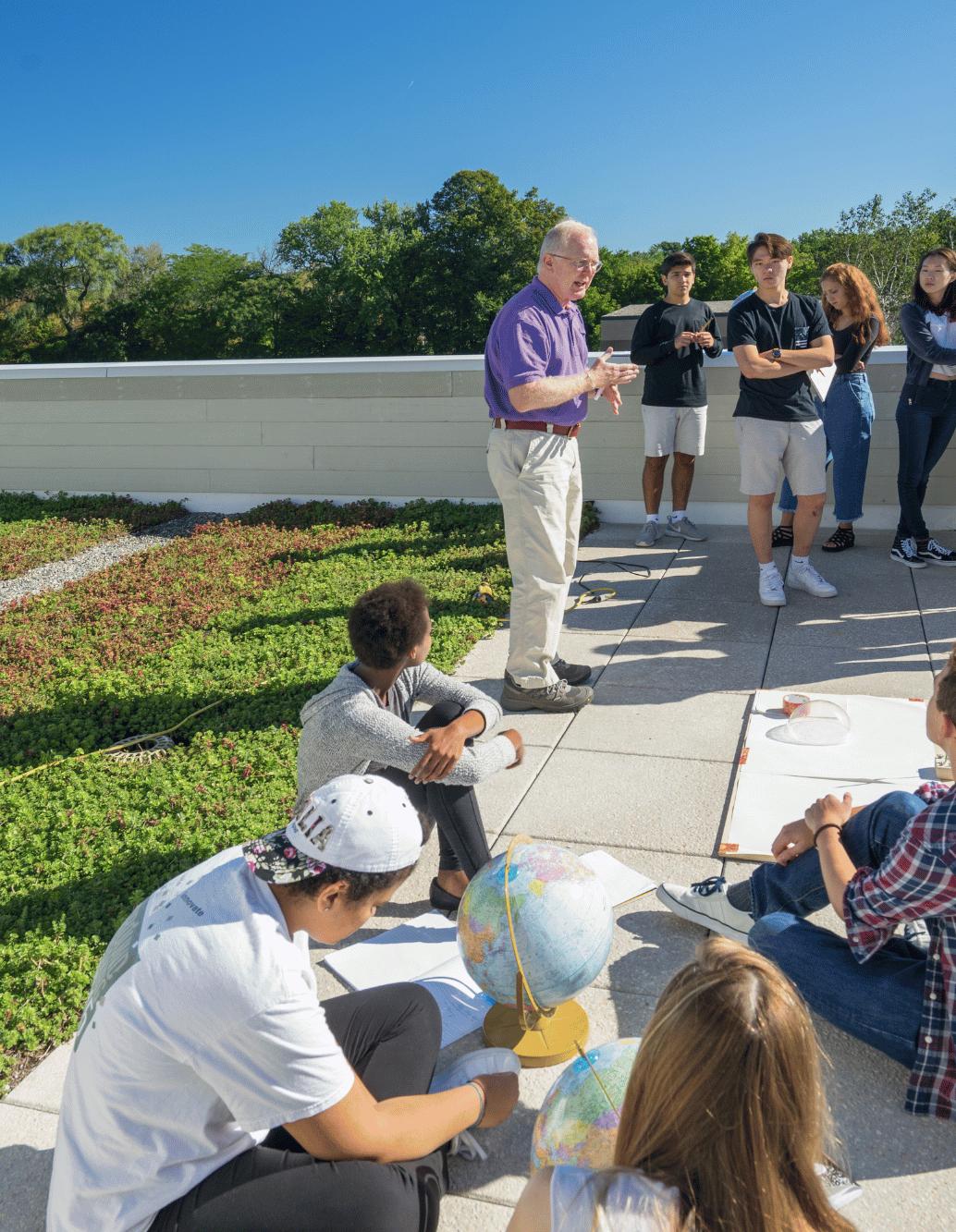
01 | COMPANY COMMITMENT
ALIGN WITH FIRM VALUES
Firm First
We invest in the health of our people and the strength of our studio. A thriving practice gives us the stability to deliver our best work and support each other along the way.
Candor
With Care
We speak with honesty and respect. Clear feedback builds trust, strengthens relationships, and keeps our work on track.
Contribute to Each Other’s Success
We offer support before it’s needed. We look our for each other and share responsibility for getting the work done well.
Come to the Table with a Strong Point of View and be Open to the Strong Points of Views of Others
We bring ideas with intention and listen with humility. Great design comes from diverse perspectives and shared understanding.
We Learn
We are always learning – from our clients, our projects, and each other. Curiosity keeps us improving, growing, and delivering meaningful work.

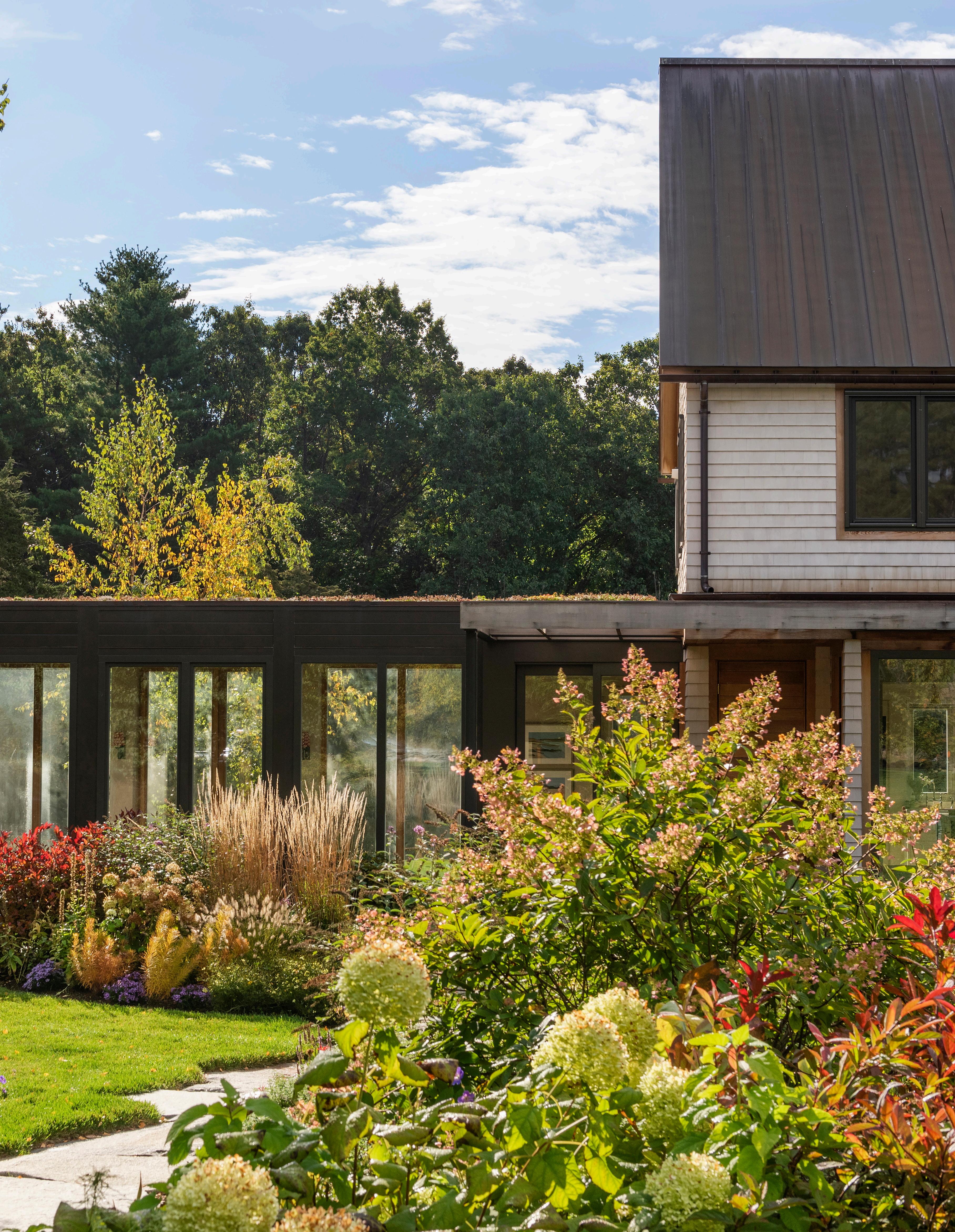
“GO OUTSIDE! ENJOY WHAT WE ARE TRYING TO PROTECT.”
Human Needs Project – Kibera Town Centre – Nairobi, Kenya
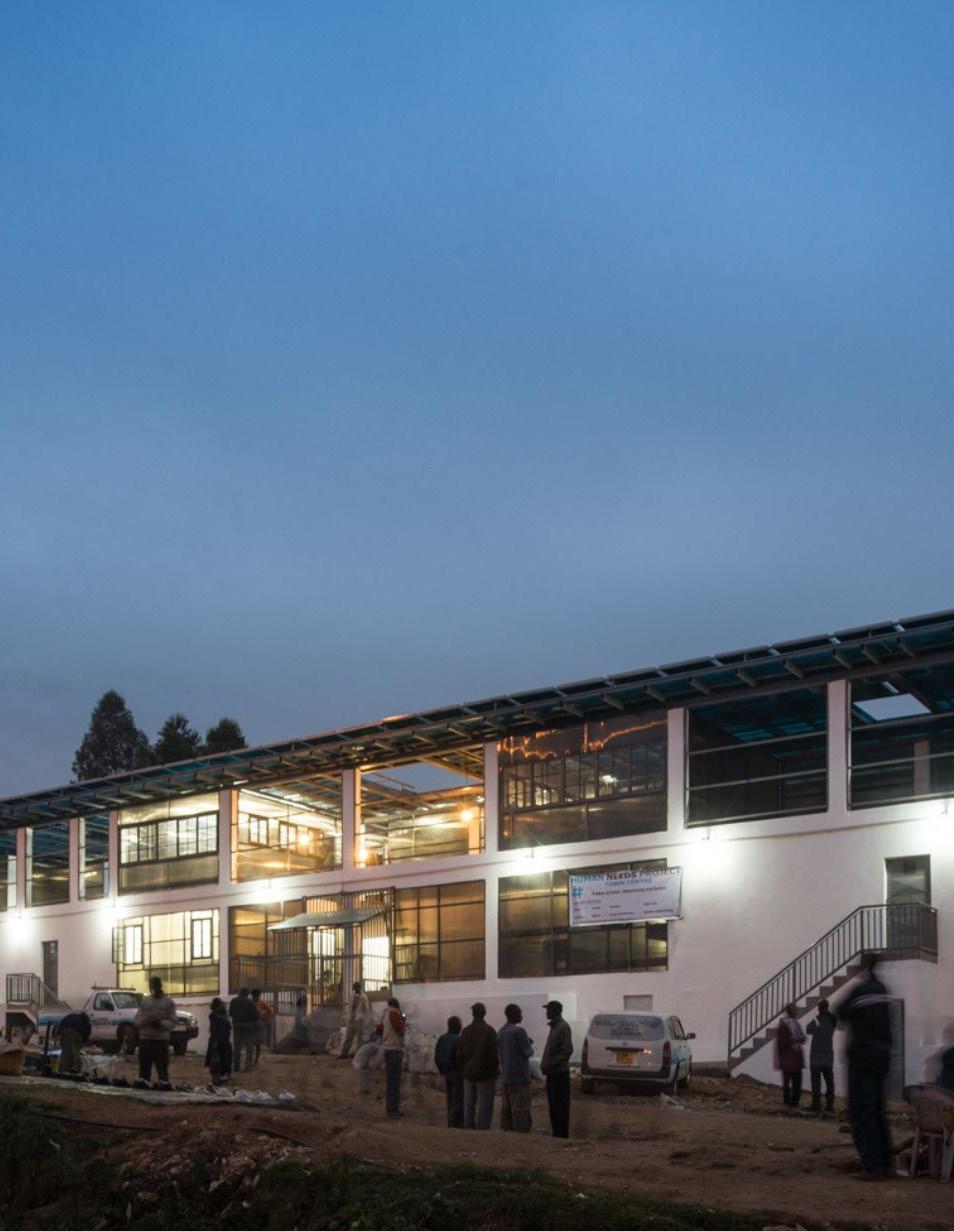
EQUITY IN PRACTICE
At the root of sustainability is the word “sustain”; to support, keep up, or prolong. How can we ensure that our work supports a livable future, keeps up with the changing climate, and is something that has a prolonged positive effect?
Intersectionality – a term coined in 1989 by professor Kimberlé Crenshaw – describes how race, class, gender, and other characteristics “intersect” and overlap one another.
Framing our commitment to sustainability through intersectionality allows us to broaden the aperture of our sustainable commitment.
We want to ensure our version of “sustainability” considers the impact on people and the planet.
As we develop land, we learn its history of acquisition and occupation.
We have an optional biweekly Social and Racial Justice lunchtime discussion to learn more and inform our practice.
Topics have included:
• The history of redlining in 20th century US cities and suburbs
• Environmental justice communities and the EJ Toolkit
• Barriers to licensure for minorities in architecture
• Universal access to restrooms
• Drawing the buildings of Black designers during Black History Month
• Robin Wall Kimmerer’s book Braiding Sweetgrass: Honorable Harvest and Maple Nation: a Citizenship Guide
• Mistinguette Smith’s lecture at the GSD: Black/Land Project
• Wanda Dalla Costa lecture at the GSD: Walking Backwards into the Future: Indigenous Design Thinking
• Opal Lee’s advocacy for Juneteenth
• Judith Heumann’s advocacy for establishing the American with Disabilities Act
Anyone can suggest a discussion topic, and all studioDSK staff are welcome!
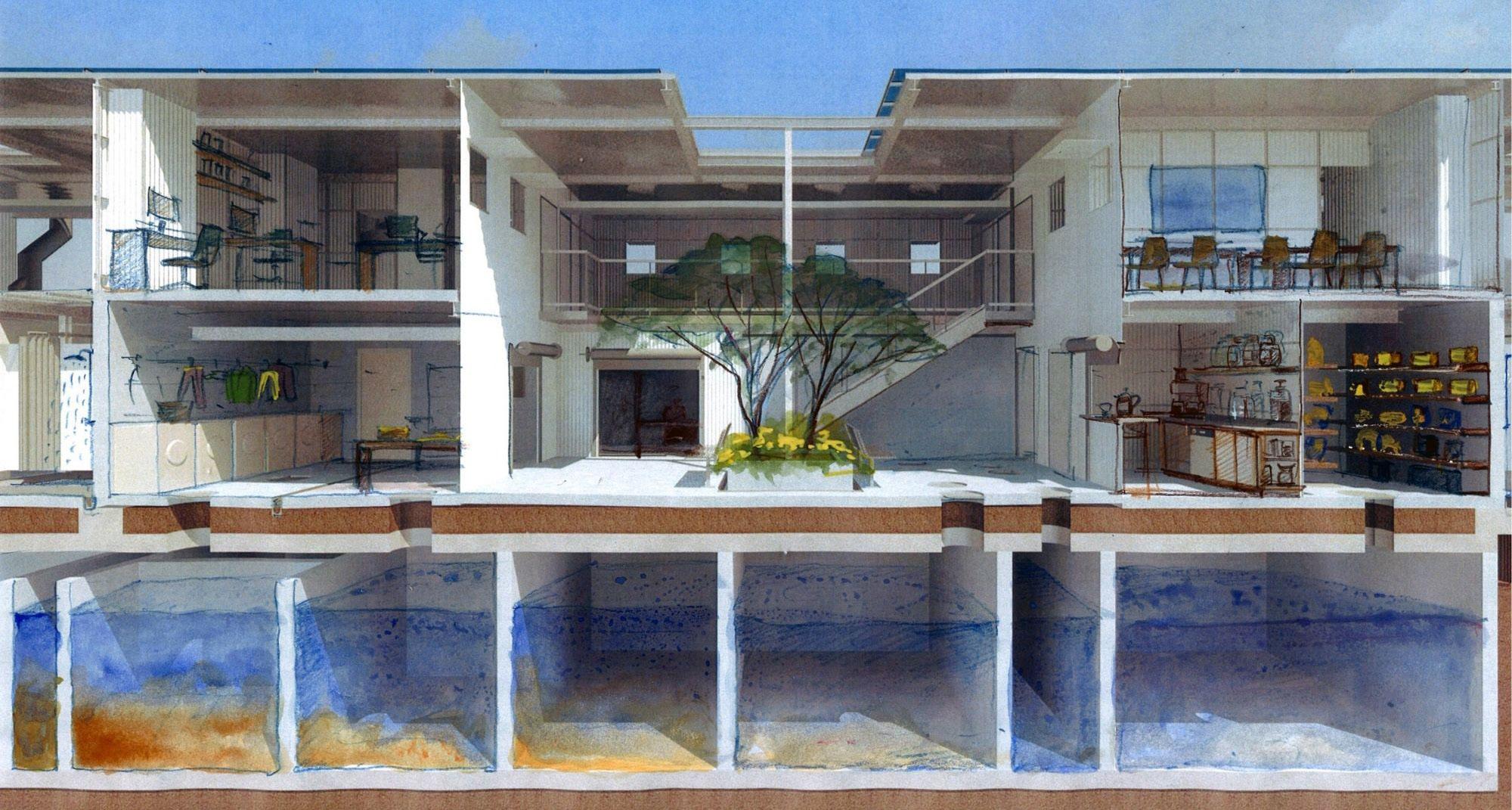
OUR 2030 COMMITMENT
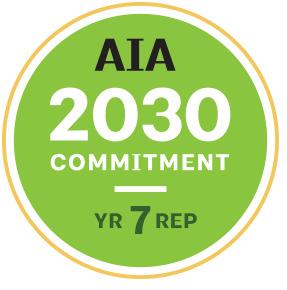
In 2018, studioDSK joined the AIA’s 2030 Commitment, and we began reporting predicted operational energy. The second part of the commitment is to develop a Sustainability Action Plan, to create a path forward for the firm. We wrote our first SAP in 2020, using our guideline Green Island Vision. Here our early goals and how we are progressing:
We committed to perform energy modeling for all non-residential projects.
ONGOING – We worked with an in-house modeling tool for daylighting, window wall ratio, and energy performance, and are now reviewing others.
We commited to review every planning and architecture project for on-site renewable energy generation.
ONGOING – We use PVWatts to review solar potential for sites. Most communities in Massachusetts follow the 2023 Massachusetts Energy Stretch code, and many of our communities are Specialized code communities, with some of those Fossil-Fuel Free.
We commited to evaluate embodied carbon (kgCO2e/ft2) on one project in 2022.
DONE – Project 1 reduced embodied energy by 18%. We are now working on our second project with WBLCA.
We commited to use the AIA Framework for Design Excellence.
ONGOING – We have evaluated several projects with the AIA Framework for Design Excellence.
We committed to increase designer interaction with AIA 2030 data exchange (dDx).
ONGOING – Some project managers prefer to meet with the Sustainability Director and have them enter info.
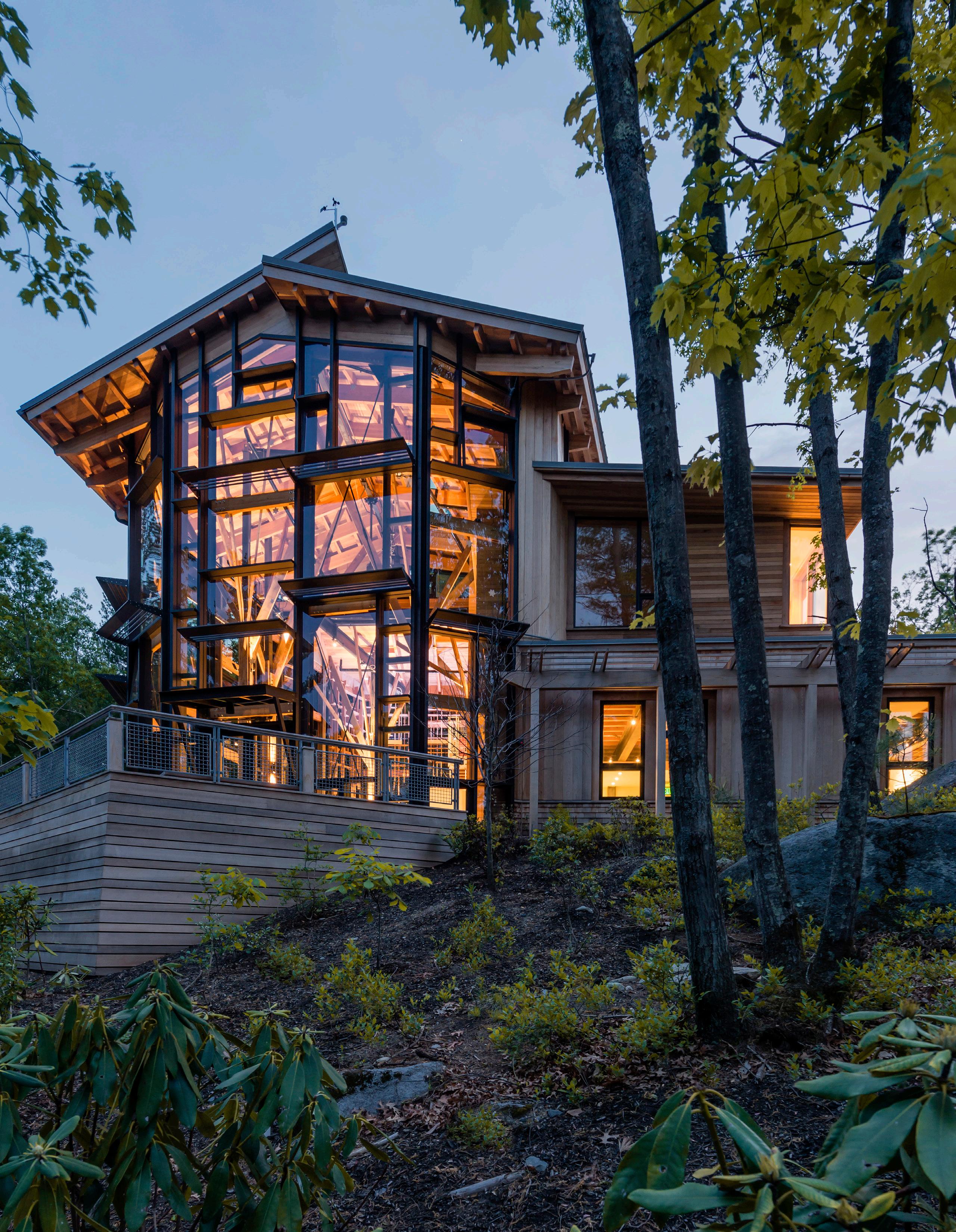
Summer Star Wildlife Sanctuary Trail Head House
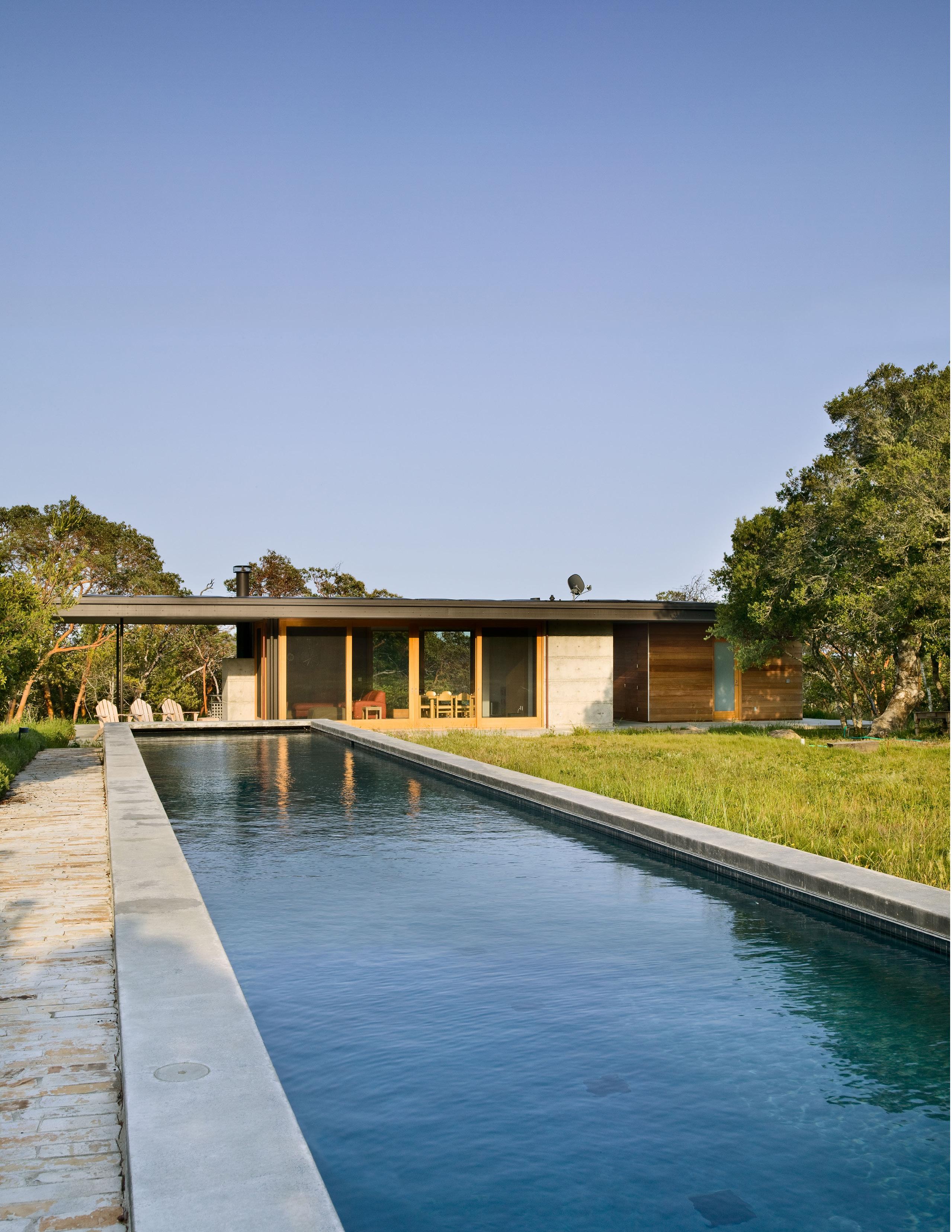
02 | DESIGN + APPROACH
GENERAL NOTES
• Milestone Meetings take place once during Schematic Design, Design Development, and Construction Documentation
• Coordinate with Practice Group as a part of Milestone Meetings on sustainability resources needed, e.g. help coordinating a sustainability charette and/or getting technical assistance
• Integrate material selections into existing milestone assessments
• When a phase concludes, report total Carbon to AIA dDx
Big Idea
• Describe the Project’s Big Idea integrating Design, Performance, and Materials
Program Development
• Establish sustainability priorities – Total Carbon, Occupant Well-being, Water
• Set of standards built into contract including SD energy model
• Renovate First
• Be able to speak on cost/benefit
• Review certification options for the project to pursue
Concept Design
• Integrate strategies into preliminary design for consideration and evaluation - use tools such as c.scale and Insight 360 to study the site orientation.
• Research and identify passive and active strategies
Schematic Design [SD]
• Sustainability Charette with Client: identify project goals
• Review and discuss sustainability goals and integraton strategies with consultants
• Graphic representation of materials
• Model and optimize building performance utilizing tools e.g. Energy Modeling, WBLCA
• Evaluate building performance model against previously established sustainability goals
• Integrate materials selection at Schematic Design Pin-up
Design Development [DD]
• Refine sustainable solutions and coordinate requirements with project consultants
• Review materials performance metrics - EPD’s, HPD’s
• Review building performance models against previously established sustainability goals
• Integrate materials selections into DD QA/QC
Construction Documents [CD]
• Finalize sustainable solutions and coordinate requirements with project consultants
• Coordinate consultants’ designs
• Evaluate design decisions informed by energy model and life cycle analysis if avaliable
• Report design data for Materials Pledge at the Firm, Project, and Product Level
Construction Administration [CA]
• Observe the construction process and the implementation of sustainable strategies
• Collect EPD’s, construction waste management plans
• Screen for substitutions
• Use the studioDSK CA Materials Tracker
Post Occupancy
• Record and review building performance - collect energy bills if available
• Compare to building performance models
03 | GOAL-SETTING
FIRMWIDE STRATEGY
studioDSK is one of the 121 firms in the United States that has participated in reporting for the AIA Architecture and Design Materials Pledge. This year we reported at all three levels: Firm, Project, and Product. As we continue to gather data for our current projects, we plan to report at all three levels again for Reporting Year 2025 (RY25).
FRAMEWORK
Resources project teams should utilize when creating a framework for a new project include:
• AIA’s Materials Pledge Reporting Guide
• studioDSK’s Healthy Materials Guide
• Previously reported Projects e.g. Farm and Coast, Duke
Project teams should decide early in the design process if they are going to report on the Firm, Project, or Product Level
TRACKING
Commit to collecting and aggregating data in a central location. Develop a system for tracking transparency metrics in a given category. Use studioDSK’s CA Materials Tracking Spreadsheet.
For each category, consult the Materials Pledge Reporting Guide.

GOALS + TARGETS
Certifications
LEED
EUI Baseline
Renewable Energy Potential
Water Use
Daylight
Embodied Carbon Goals
Indoor Air Quality (IAQ)
Firm - Project - Product - Level Tracking
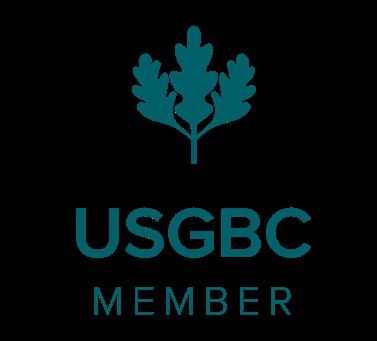
RESOURCES
Whole Building Life Cycle Analysis [WBLCA]
Consultants
Envelope Studies
Climate Studio
Insight
MA Stretch Code - Upcodes
Refine Specifications
Mindful Materials
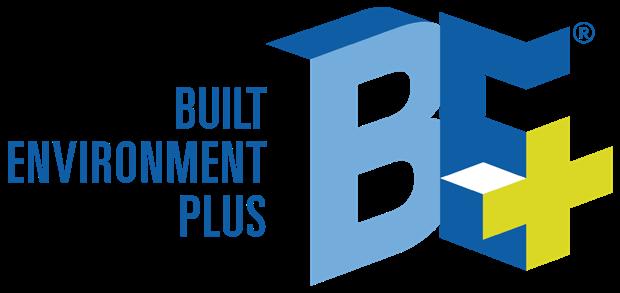
TRACK
TEST
studioDSK CA Materials Tracker (pg. 23)
studioDSK Project Materials Spreadsheet
studioDSK EUI/HERS Tracking
Internal Shares, Lessons Learned
AIA design data exchange (DDX)
Lighting Power Density (LPD) Tracking
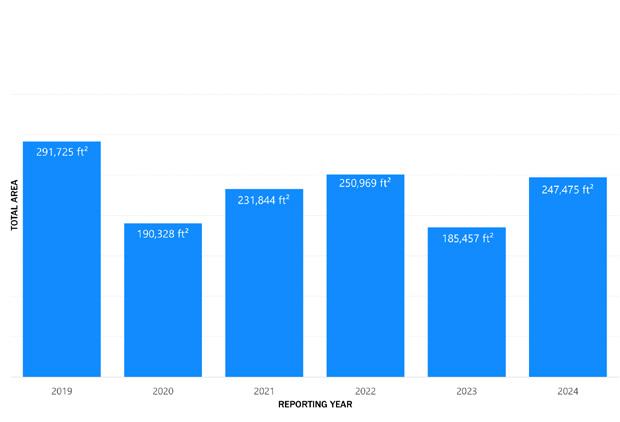
MEP Commissioning and Balancing
Sensor & Occupancy Data
COM-RES Checks
Collect opperational energy use and compare to pEUI
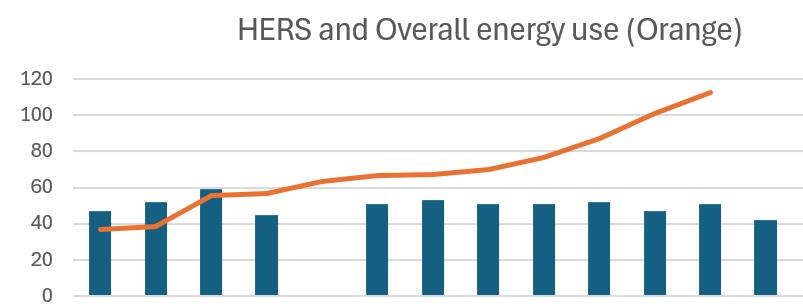
WBLCA
TELL YOUR STORY
FARM & COAST – SOUTH DARTMOUTH, MA
studioDSK designed the renovation of the recently opened cafe, market, and bar in Pananaram, South Dartmouth, MA. Materials were carefully considered for sustainability and we designed an AIA Materials Pledge Bingo to the right.
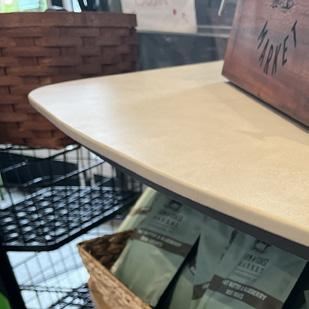

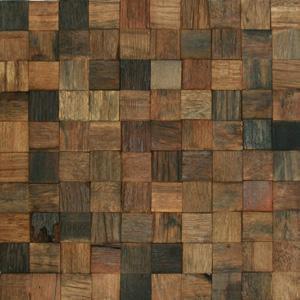
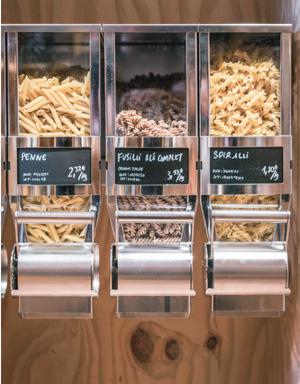
CARBON – The countertops are made by a company with B-Corp Certification which recycles 100% of its wastewater. The selected product is a CarbonZero product which is a CarbonNeutral Service.
RECLAIM – The client’s favorite feature is a wood column with salvaged boat cleats that serve as coat hooks.
RESTORE – Ceiling tiles made of wood from salvaged boats provide improved acoustics in the cafe.
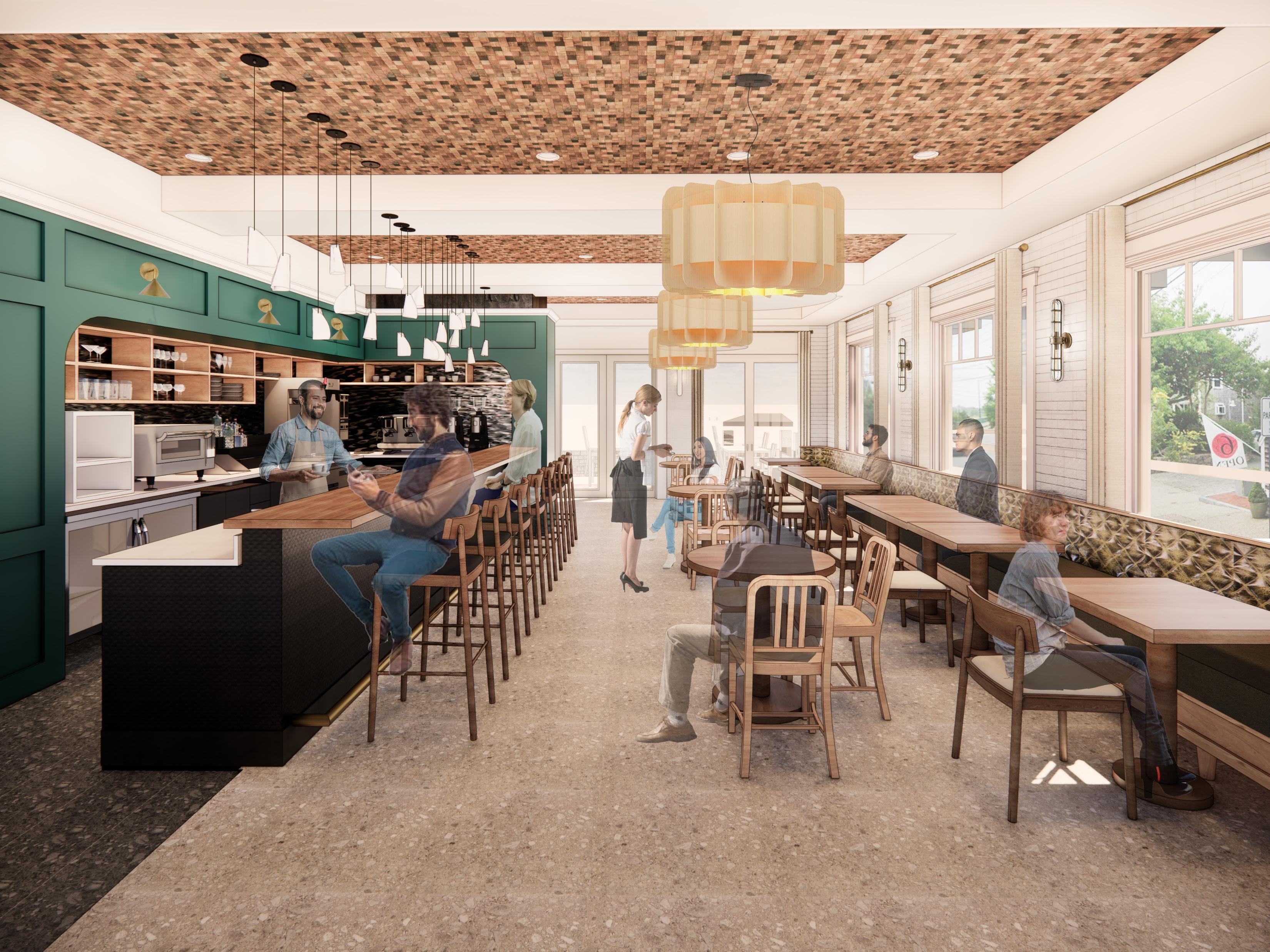
BULK – We designed glass and stainless steel bulk food dispensers to reduce food waste. These custom dispensers also reduced the amount of plastic used in our design.
R M & C O A S T
A I A M A T E R I A L S P L E D G E
B I N G O
In this Bingo game, the left side are Materials Pledge categories. If you go to the store, can you find all the different special materials in the cafe?
H U M A N
H E A L T H
E Q U I T Y
E C O S Y S T E M S
B E N M O O R E
E C O S P E C
P A I N T
Z E R O V O C ’ S
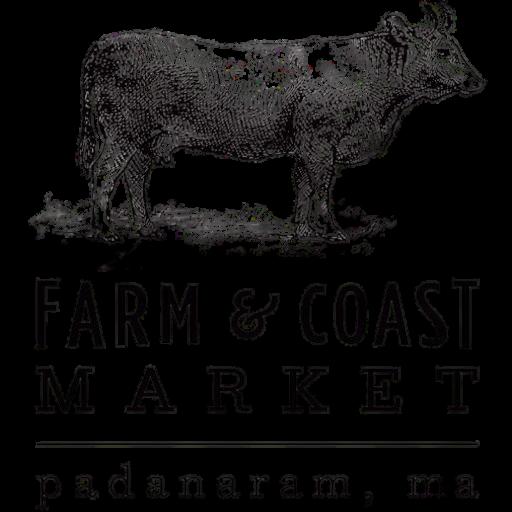
A C O U S T I C A L
C E I L I N G T I L E S
M A D E F R O M B O A T
H U L L S M E C H F A S T E N E D
F L O R I M
C O U N T E R T O P S
B - C O R P C O M P A N Y
C L I M A T E
C I R C U L A R I T Y
T E M P C O F F E E
I S L A N D
R E U S E D M A T E R I A L
T O R T O R A
F L O O R
E P D , L E E
R O P E T O T E M
H A N D M A D E A R T
P I E C E
F U T U R E B U L K
F O O D
Z E R O - W A S T E
WHAT GETS MEASURED, GETS MANAGED.
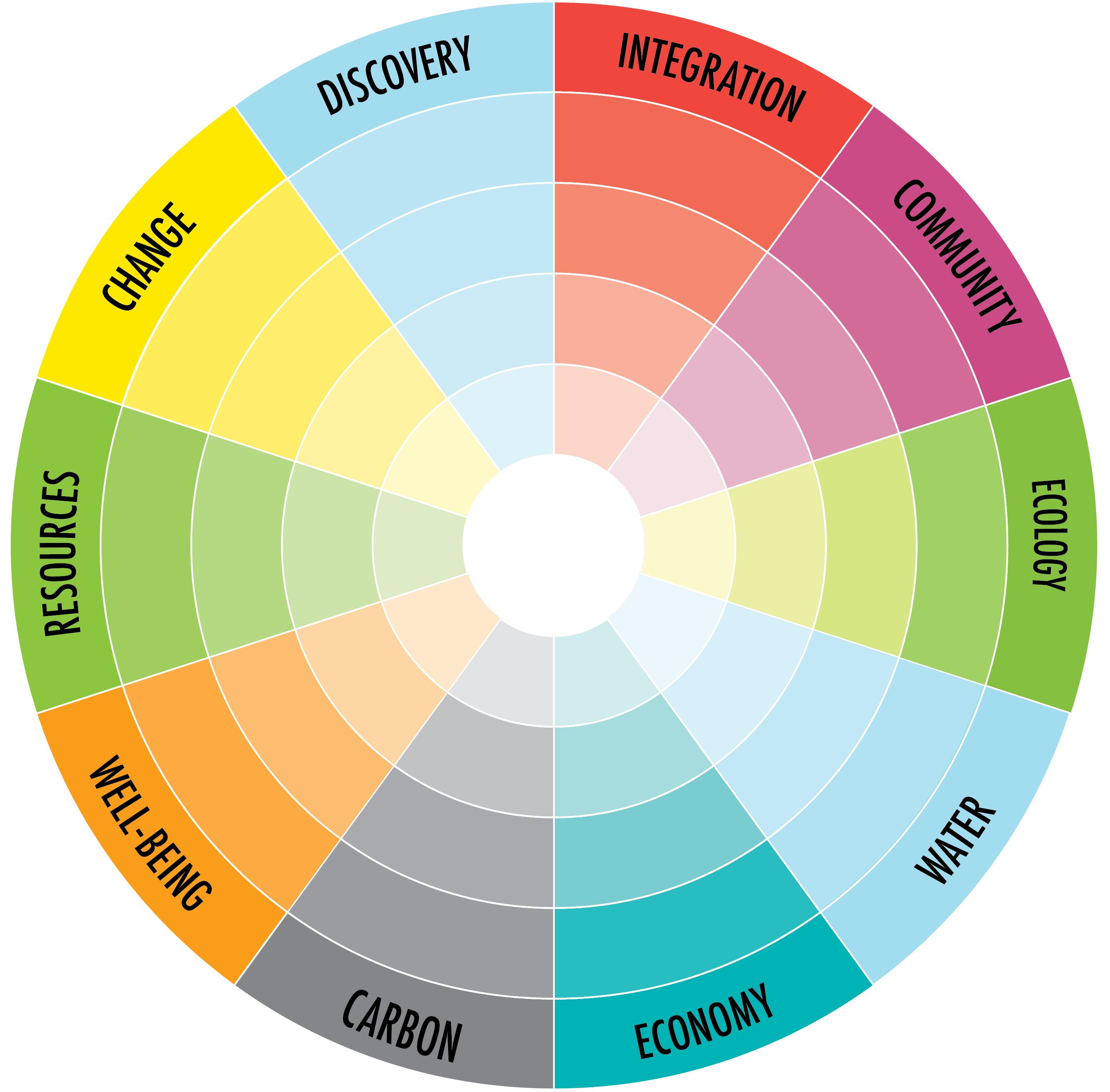
A HOLISTIC APPROACH
The Sustainability Wheel represents a holistic approach to the design of a building, neighborhood or campus.
The color gradations speak to the depth of improvement in a given zone of focus- the darker a zone, the deeper the improvement.
The AIA Framework for Design Excellence aligns with the Sustainability Wheel, and the AIA Toolkit provides metrics and questions for the project team with reference baseline information.
Open the Super Spreadsheet and dive in!
Our goal is to consider and optimize:
• The building envelope
• Daylight and views
• Monitoring indoor air quality
• Embodied energy (carbon footprint)
• Energy used during operations (pEUI)
• Occupant trips (CO2e/occupant)
• Healthful materials
• Avoid chemicals of concern
• Water, sanitation and stormwater
• Waste
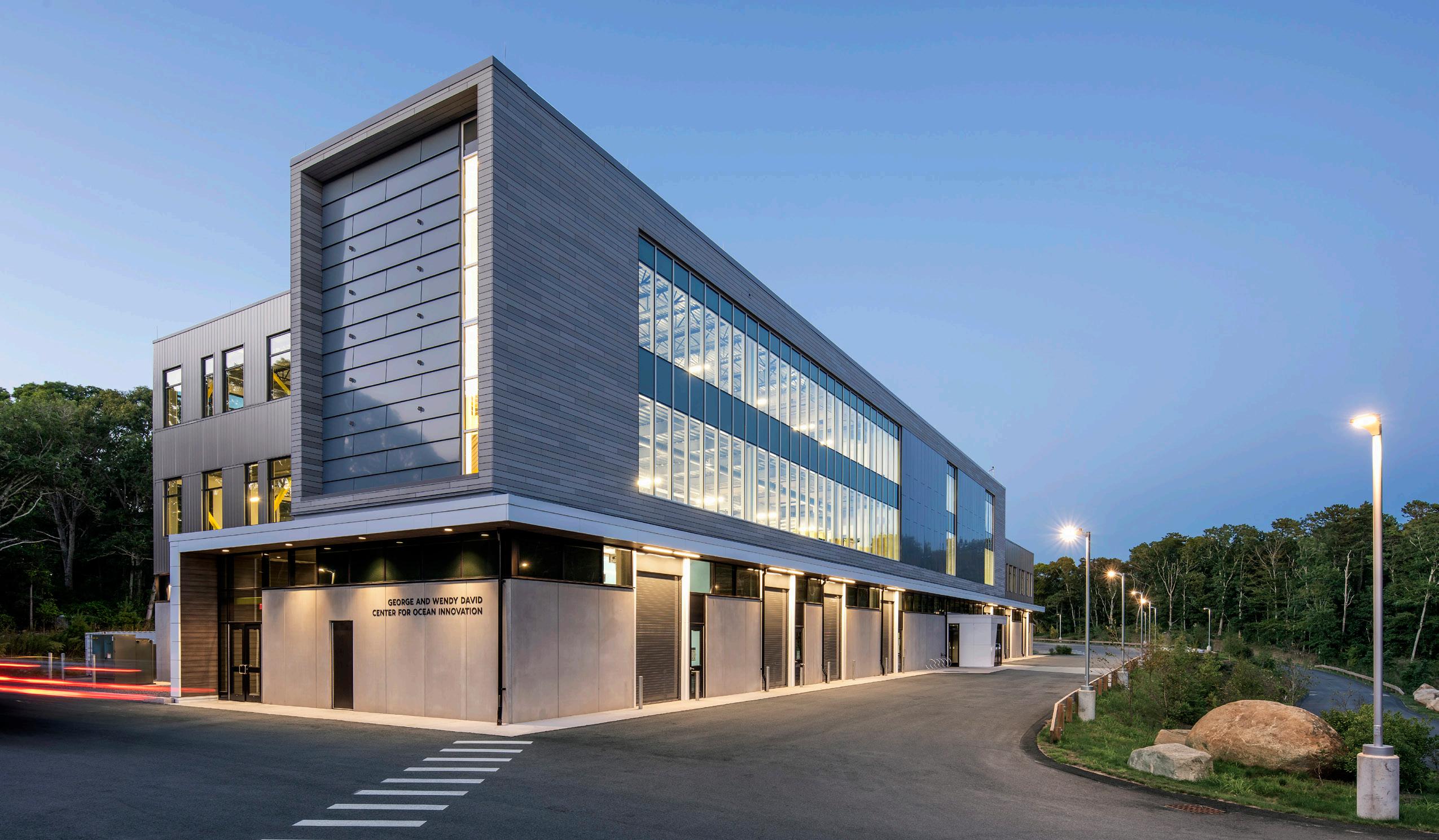
Marymount Manhattan College – Judith Mara Carson Center for Visual Arts
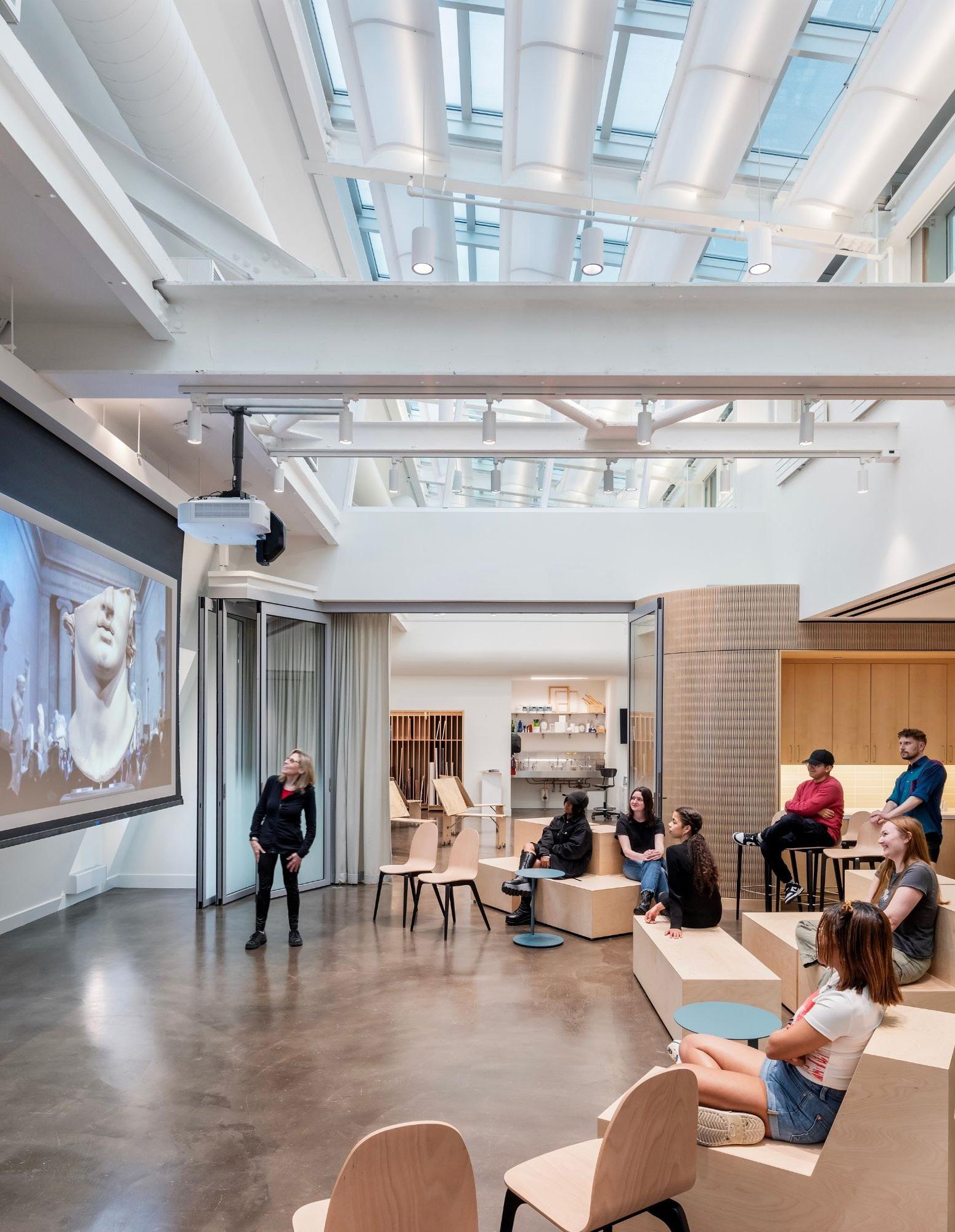
MATERIALS PLEDGE
IN ACTION
MATERIALS SUSTAINABILITY GOALS
Align with the Common Materials Framework and Design Materials Pledge goals set by the AIA and collaborating firms. Prioritize the following statements in all projects. Refer to resources page for links.
AIA Architecture & Design Materials Pledge

HUMAN
HEALTH
Prefer products that support and foster life throughout their life cycles and seek to eliminate the use of hazardous substances.
Look for: Declare, HPD’s, Cradle to Cradle, BIFMA, Red-List-Free

SOCIAL HEALTH & EQUITY
Prioritize products from manufacturers that secure human rights in their own operations and in their supply chains, positively impacting their workers and the communities where they operate.
Look for: JUST Certification, B Corp, Cradle to Cradle Social Fairness Certificate

ECOSYSTEM HEALTH
Select products that support and regenerate the natural air, water, and biological cycles of life through thoughtful supply chain management and restorative company practices
Look for: EPD’s, FSC Certified Products, Recyclable Materials, Local Materials, NSC 373 Stone Certification

CLIMATE HEALTH
Prefer products that reduce carbon emissions and ultimately sequester more carbon than emitted.
Look for: Cradle to Cradle, EPD’s, Embodied Carbon Metrics, Carbon Neutrality, Living Product Challenge

CIRCULAR ECONOMY
Reuse and improve buildings by designing for resiliency, adaptability, disassembly, and reuse, aspiring to a zero-waste goal for global construction activities.
Look for: Manufacturer Take Back Programs, Recyclable Materials
04 | GOVERNANCE + REPORTING
PROJECT NAME:
PROJECT NUMBER:
DATE:
CONSTRUCTION ADMINISTRATION
PRODUCT TYPES COMMON
DATA COLLECTION INFRASTRUCTURE
Project teams should identify a point person for data collection, but all project team members should be aware of the impact categories and contribute to product/material research and strategies.
SCALE THE IMPACT
• Track strategies/certifications during product selection.
• Maintain our database of preferred materials including relevant product data.
• Leverage product selection tools such as Acelab, BuildingEase, Sustainable Minds Project Builder, or a simple spreadsheet.
Share your findings within the firm through:
• Monday Morning Meetings
• Teams posts
• Emails
• Lunch and Learns
• studioDSK|U
• studioDSK101
033000
Cast-in-place concrete 042000 Unit masonry
Various Stone assemblies 051200
Structural steel
061000 Rough Carpentry 061500/061800 Mass timber 062000 Finish carpentry 072100 Insulation 074213
Metal wall panels 081113
Hollow metal doors 081416
Flush wood doors 088000 Glazing 092116
054000/092216
Gypsum board assemblies
Non-structural metal
093000 Tiling 095100 Acoustical ceilings 096500 Resilient flooring 096800 Carpeting 099000 Paint and coatings 123600 Countertops Various Fabric Div 12 Furniture
ADMINISTRATION MATERIALS TRACKER
CATEGORY
concrete
Concrete mixes, reinforcing steel (rebar)
Brick, concrete masonry units (CMU)
Natural stone cladding, flooring, tiling, etc
Structural steel columns, beams, and decking
Dimensional lumber
Glulams, CLT, DLT, NLT, mass plywood
Milwork including trim, base, wood panels
Board, batt/blanket insulation
Exterior envelope metal panels
and frames Steel doors and frames
Wood doors
Flat glass, insulated glazing units
assemblies
metal framing
Standard or fire-rated gypsum board, sheathing
Structural cold-formed or interior metal stud framing
Ceramic, porcelain, stone, glass, etc.
Ceiling panels (mineral, fiberglass, stone, wool), suspension systems
Resilient tile and Sheet flooring, resilient base
Tile carpeting, broadloom/sheet carpeting, rugs
Interior paints and primers, standard performance
Countertops of various types
Fabric for wall panels, furniture, curtains, etc.
Various movable furniture items
ALIGNED IMPACT CATEGORIES
05 | INTERNAL TRAINING + EDUCATION
1
2
Update SAP to reflect the pledge statements.....
Continuous/Ongoing
3
Create or refresh your firm’s materials library and policies.....
Healthy Materials Guide
4
Make materials and product selections based on pledge criteria.....
studioDSK CA Materials Tracker
5
Build Literacy and train employees about materials at your firm.....
studioDSK|U Encourage Conversations.....
Ongoing talks internally and with manufacturers, clients, & contractors
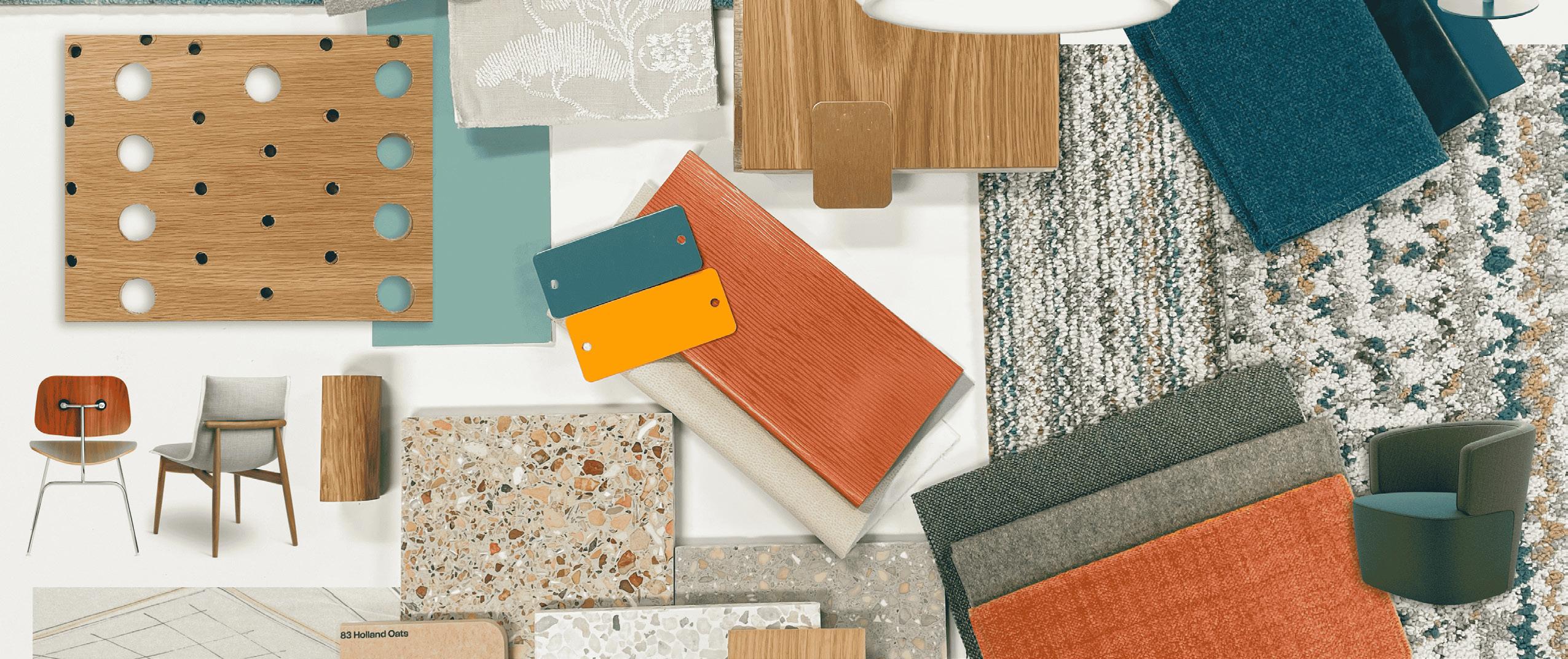

HUMAN HEALTH
studioDSK Healthy Materials Guide is a robust resource for the studioDSK design teams on High Touch materials and provides resources and recommendations for designers in materials selections.
• Designer Grace Pilkington presented Human Health and Building Materials to colleagues focusing on avoiding forever chemicals in building material selection and specifications.

SOCIAL HEALTH AND EQUITY
Sustainability Leader and architect, Amy Latva-Kokko, presented Social Health and Equity and Building Materials focusing on:
• Identification of problematic building materials with research published by Grace Farms
• Reviews the following for the LEED pilot credit for social health and equity
• Two Company Standards, for mining and steel
• Product Standards, for concrete, wood, and carpet
• Reviews a case study of Social Life Cycle Assessments of a building product from the Social Hotspots Database

ECOSYSTEM HEALTH AND CLIMATE HEALTH
Sustainability Leader and architect, Amy Latva-Kokko and designers Grace Pilkington and Scott Toth developed and taught a studioDSK|U course titled Ecosystem Health and Climate Health of Building Materials focusing on the following concepts and tools studioDSK has created:
• Supply chain management
• Carbon sequestration

• CA Materials Tracker
• This construction contract administration tool assists teams to become facile with the carbon footprint of Building Materials
Insulation Boards
• Samples of an array of insulation materials assist designers with understanding of combustibility, carbon footprint, and other performance metrics of insulation products

CIRCULAR ECONOMY
• Intern Sophia Fonseca’s white paper titled “Caribbean Circular Economic Future” on the circular economy
06 | OUTREACH, ADVOCACY + KNOWLEGE SHARING
PLAN COMMUNICATION
Materials Lab: Communicate to reps performance requirements of materials that come into the Materials Lab including impact on human health, climate & ecological health, and ask about supply chain information.
Healthy materials are essential to our work. Include healthy materials as part of project documentation.
SHARING THE KNOWLEDGE TO INDUSTRY STAKEHOLDERS
studioDSK participated in a Boston Society of Architects [BSA] Committee on the Environment [COTE] Materials Pledge for Earth Day, Spring 2025
studioDSK to participate in AIA SAP’s for Small Firms Presentation, August 2025
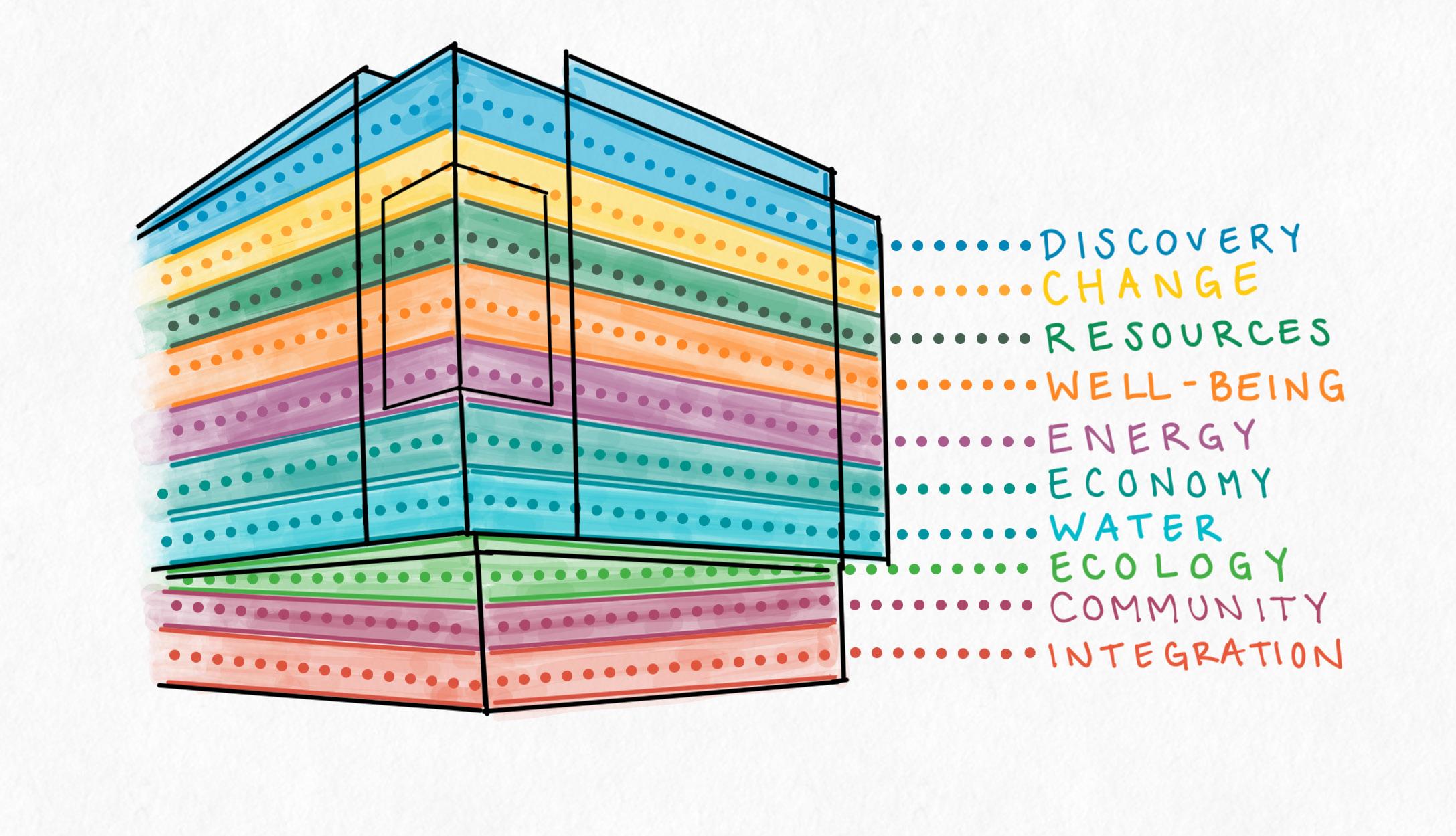
07 | MATERIALS ACTION PLAN IN OUR OWN BACKYARD
INTERNAL AUDITS
As we pursue JUST certification, studioDSK is developing a policy for procurement.
• Buy local
• Waste Management
• studioDSK composts food waste and coffee pods
• studioDSK recycles paper and cardboard and is looking to recycle more
• Use Material Bank as much as possible to reduce samples going in the trash
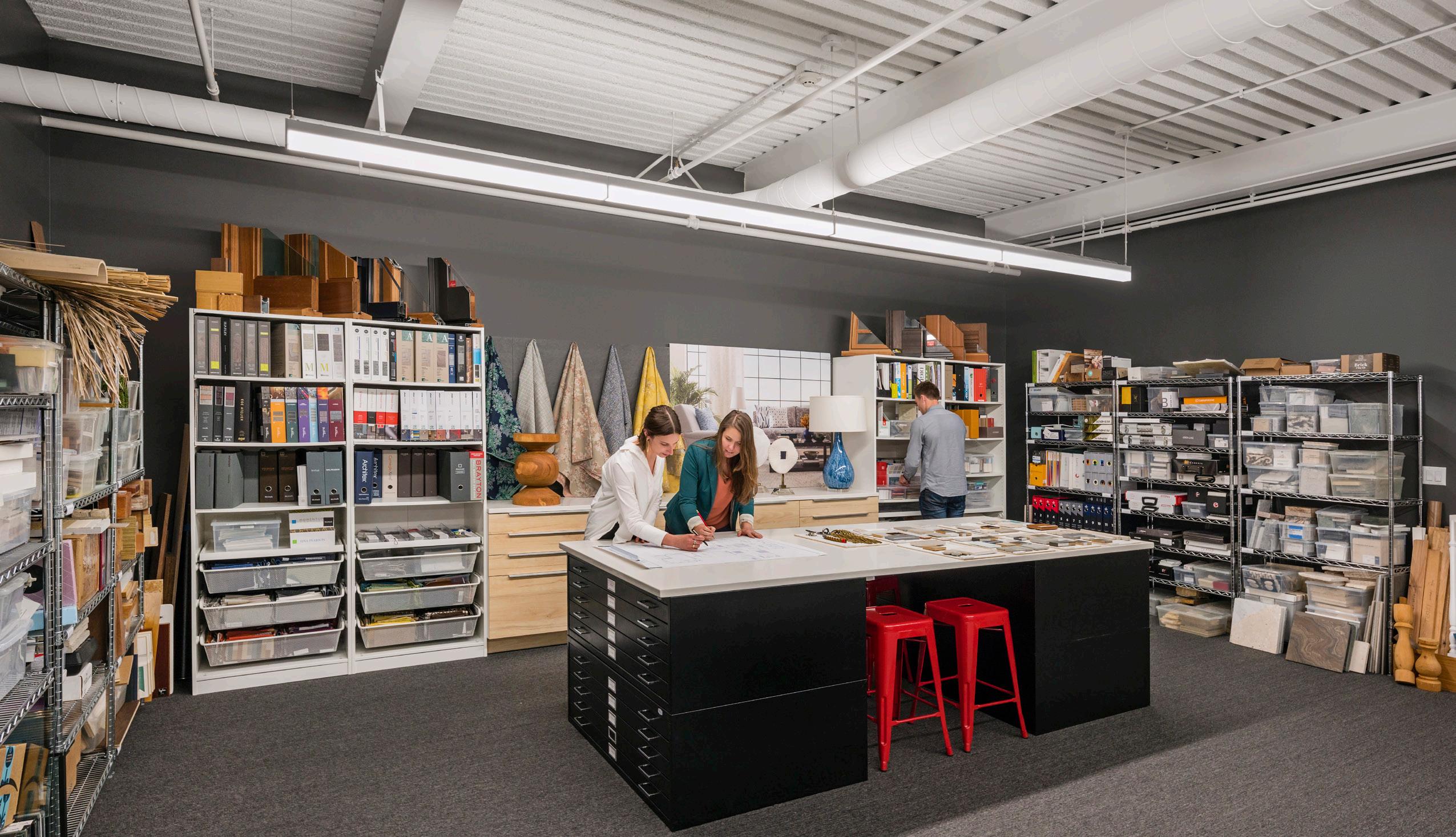
BEST PRACTICES
Fill out the AIA Design for Excellence Toolkit – measurable, actionable data.
Integration: What is the project’s big idea that integrates sustainability and design?
Community: Identify how the project contributes to the community: Walk, Transit, Bike Scores
Ecology: Prioritize native plants over turf grass
Ecology: Promote biodiversity, Dark Skies, Bird Safety, Soil Conservation, Carbon sequestration, habitat conservation of flora and fauna, abate regional environmental concerns
Ecology: Quantify percent change in vegetated area
Water: Benchmark and reduce flow rates - toilets, urinals, showers, lavatories
Water: Do not use potable water for irrigation
Water: conserve or eliminate cooling tower water
Water: Quantify gallons of potable water per occupant per year
Economy: Identify strategies to reduce maintenance and operations cost
Energy: Get an SD energy model, work with HERS rater on residential projects
Energy: Review all projects for on-site renewable energy generation
Well-Being: Design for Daylight & views
Well-Being: Review IAQ monitoring approach with client- consider monitoring PM2.5, thermostats
Well-Being: Identify Materials with certifications used; best practice is for over 40 to have a rating.
Well-Being: Identify Chemicals of concern avoided
; Incorporate sustainability into Division 01 of specifications.
Resources: Specify GM to sign the Contractor’s Commitment to Sustainable Building Practices
Resources: specify Materials Recovery Facilities for waste diversion
Resources: Identify percentage of C&D waste diverted
Resources: Design for disassembly
Resources: have Structural Engineer write specifications for Low-Carbon concrete with performance requirements that allows CM flexibility to optimize mixes
; Resources: Collect Environmental Product Declarations.
; Resources: Specify low carbon Finishes.
; Resources: Specify no added urea formaldehyde.
Resources: Train staff to model embodied carbon
Resources: Quantify pounds of CO2/ occupant
Change: Review site for resiliency
Discovery: Post-occupancy assessment
ACTIONS
; Siting: Renovate first.
; Target on-site non-polluting renewable energy on every project (e.g., PV panels, solar hot water, air source heat pumps, SHW, GSHP, Wind- show these technologies in early sketches)
; SD and Pricing: Specify a HERS rater in General Notes. This pays for itself during construction especially with design-build.
; Build tight, ventilate right – our envelopes do not leak air, but do breathe. We have projects that have achieved 1.25 ACH, 1.54 ACH, and 1.83 ACH.
; Target low global warming potential thermal insulation. Shifting away from foam. See the insulation boards.
; Optimize views and daylight.
; Efficient windows for comfort and efficiency. U-0.3 max in climate zone
; Encourage homeowners to donate fixtures and building materials salvaged from deconstruction.
; Avoid rainforest wood. North Shore Meadow House was able to eliminate rainforest wood entirely.
Identify every site for its sunnumber, illustrate project with PV from the beginning. Review every project for on-site renewable energy generation
Resources: Review salvage opportunities with Owners including tax rebates in order to donate, and recycle building materials from deconstruction
Introduce HERS raters to Owners and they can engage the rater directly. Raters often pay for themselves in rebates and operational savings.
Discovery: ask Owner if they will share their utility data for us to continue learning? We can log this data into the AIA 2030 database (dDx) while maintaining privacy of the owner’s information.
Discovery: document 5 lessons learned from a project and share with the firm
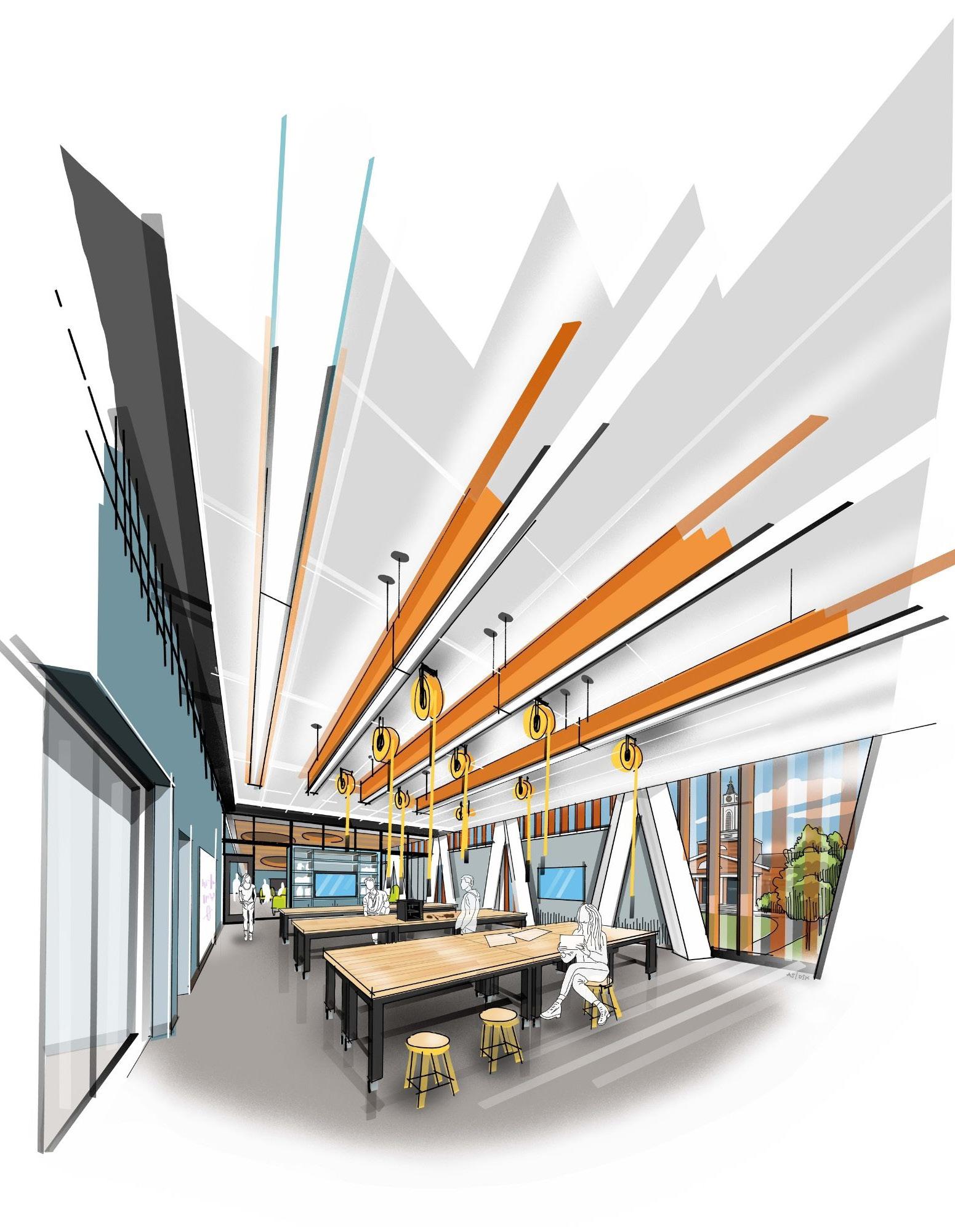
RESOURCES
Tools for up to date information on materials selection
PRODUCT SEARCH
• Mindful Materials
• Declare
• SPOT UL Greenguard Product Database
• SCS Global Services
• Parsons Healthy Materials Lab
• Cradle to Cradle Product Registry
• Material Bank Sustainability
• BIFMA LEVEL Certified Database
REFERENCE & EDUCATION
• Building Green - studioDSK has paid access to articles, resource guides, and CEU courses
• Informed - Resources for product guidance
• Six Classes - Free online classes about red list chemicals
• Harvard For Health - Resources about healthy buildings
• Green Science Policy Institute - Resources about red list chemicals
• HPD Collaborative - Resources tab has a variety of healthy material guidelines
• Habitable Future - Research reports, general chemical expertise, and material selection guidelines
• Green Building Advisor - Detailed advice on high-performance buildings and materials
• Carbon Leadership - Resources about decarbonizing the built environment
• Building Transparency - EC3 Tool - Digital program that helps with material specification
GLOSSARY OF TERMS
AIA 2030 Design Data Exchange (DDx) - A tool to make it easier and faster to record project data, get actionable information, and advance your firm’s energy and carbon performance.
Air Source Heat Pump (ASHP) - A type of heat pump that can absorb heat from outside and release it inside. The same system can be used for cooling. In some cases, it can also heat domestic hot water. A refrigerant is pumped through the heat pump’s indoor and outdoor coils. The efficiency of air source heat pumps are measured by the coefficient of performance (COP). A COP of 4 means a heat pump produces 4 units of heat energy for every 1 unit one electricity it consumes.
Architects Climate Action Network (ACAN) - A network of individuals within architecture and related built environment professions taking action to address the twin crises of climate and ecological breakdown.
ASE: Annual Sunlight Exposure - measures the percentage of floor area that receives too much direct sunlight. Simulations can be conducted for automatic glare control when horizontal plane has more than 1000 lux.
Building Energy Consumption Survey (BECS) - AIA 2030 uses BECS as the baseline energy consumption against which the target is set at 70% reduction.
Biogenic Carbon - carbon released or absorbed during the lifecylce of plants, for example in the LCA of a timber building, some programs take biogenic carbon into account and others do not.
Combined Heat and Power (CHP) - An energy efficient technology that generates electricity and captures the heat that would otherwise be wasted to provide useful thermal energy such as, for space heating, cooling, domestic hot water and industrial processes.
DGP: Daylight Glare Probability - an indicator of perceived glare from daylight. To minimize glare, target to not exceed 0.45 DGP for more than 5% of occupied time and space.
Embodied Carbon - emissions associated with transport and manufacture of Building Materials, measured in pounds or kilograms of CO2 equivalent per unit of the material.
Embodied Carbon in Construction Calculator (EC3) - A free and easy-to-use tool that allows benchmarking, assessment and reductions in embodied carbon, focused on the upfront supply chain emissions of construction materials.
EMP: Equivalent Melanopic Lux - A measurement of vertical lux, taken 47” above the floor, approximately eye level for someone sitting at a desk. This approach is a fairly new aspect of Human Centric Lighting (HCL), which focuses on lighting for human health.
Energy Use Intensity (EUI) - An indicator of the energy efficiency of a building’s design and/or operations. It is calculated by dividing the total energy consumed by the building in one year by the total gross floor area of the building. EUI is expressed as thousands of British thermal units used per square foot per year (kBtu/sq. ft./year).
Ground Source Heat Pump (GSHP) - A type of heating/cooling system for buildings that transfers heat to or from the ground, taking advantage of the relative constancy of temperatures of the earth.
Global Warming Potential (GWP) - The heat absorbed by any greenhouse gas in the atmosphere, as a multiple of the heat that would be absorbed by the same mass of carbon dioxide.
International Living Futures Institute (ILFI) - A nonprofit working to build an ecologically minded, restorative world for all people. Using principles of social and environmental justice, ILFI seeks to counter climate change by pushing for an urban environment free of fossil fuels.
Leadership in Energy and Environmental Design (LEED) - The most widely used green building rating system. Available for virtually all building types, LEED certification is a globally recognized symbol of sustainability achievement and leadership.
Life Cycle Analysis (LCA) - a methodology that measures the environmental impacts of a building, product, or process over its full life cycle, from raw material extraction through end-oflife and disposal. Check out Carbon Leadership Forum for tools and more on Whole Building Life Cycle Analysis.
Living Building Challenge (LBC) - A certification program that defines the most advanced measure of sustainability—providing a framework for design, construction and the symbiotic relationship between people and all aspects of the built environment.
Lighting Power Density (LPD) - A simple screening measure that indicates whether a space offers opportunities for energy savings. LPD is defined as watts of lighting per square foot of room floor area (W/sf).
Net Zero Energy (NZE) - The amount of energy demand is equal to the amount of energy produced by renewable sources annually.
Operational Carbon - Greenhouse gas emissions associated with energy use. See Embodied Carbon.
Predicted Energy Use Intensity (pEUI) - The modeled predicted energy use for a project, as measured by an energy model. It most often measures site energy consumption but can also account for source energy.
Site Energy - The net produced and consumed by a building on a project site. It represents the energy consumed by the building as measured by the utility meter and reflected in utility bills and is likely a primary driver for the client. It does not represent the energy used to, or the emissions from, providing energy to the building.
sDA: Spatial Daylight Autonomy: Measures percentage of floor area that receives adequate sunlight.
US Green Building Council (USGBC) - A nonprofit organization that supports the development of prosperous, healthy and resilient communities through the transformation of the built environment.
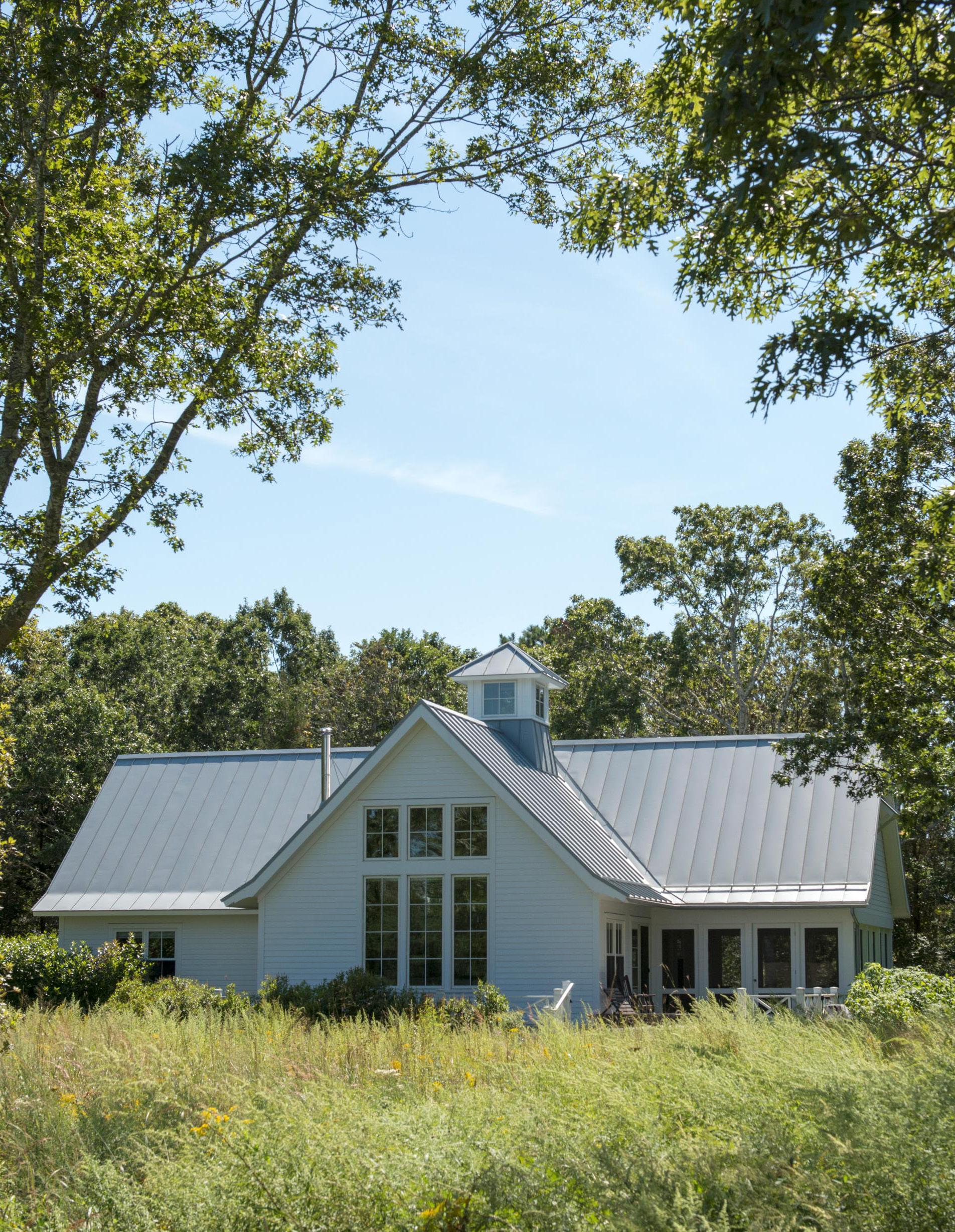
Three Little Houses – LEED Silver
